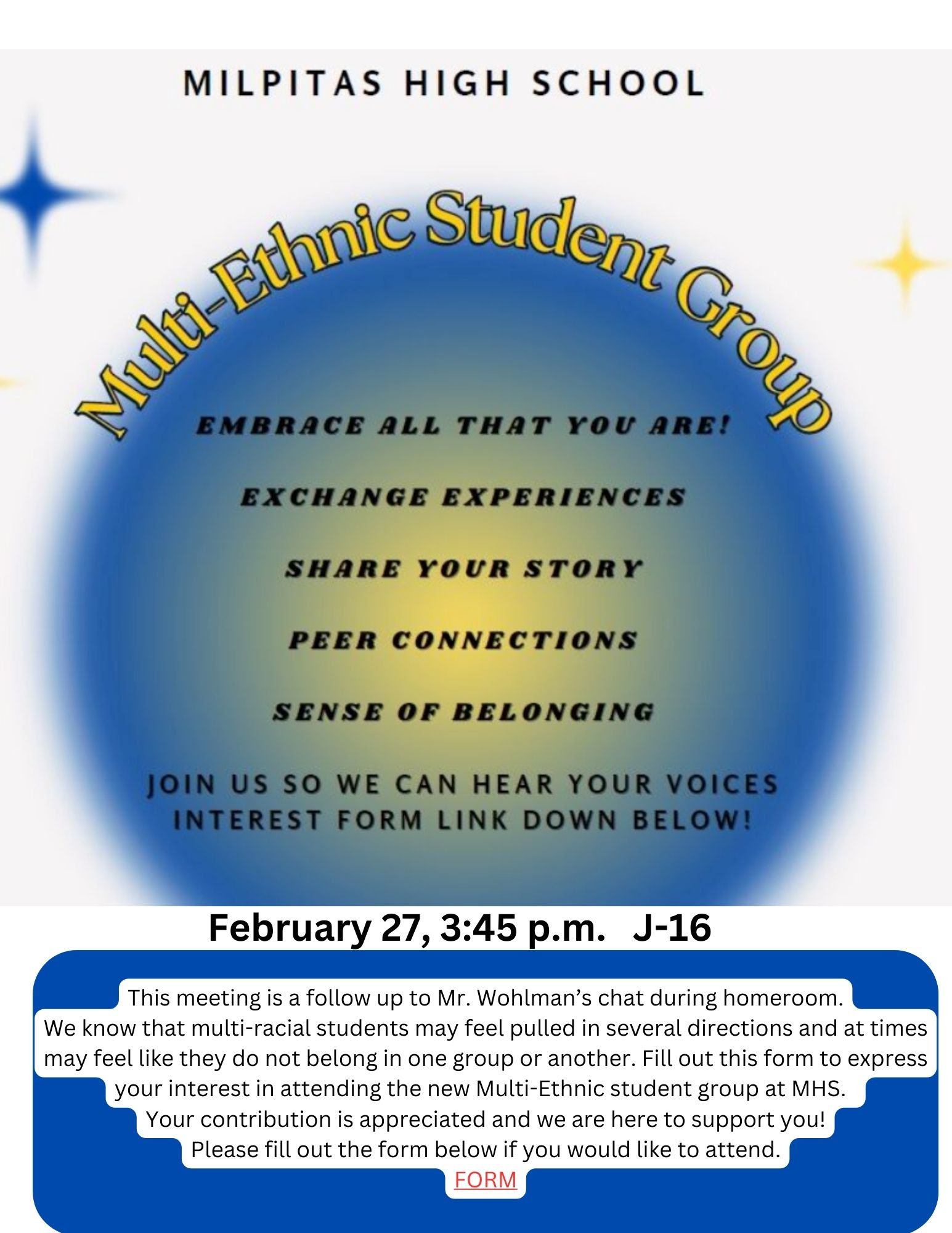The Multi-Ethnic Student Group aims to support underrepresented parts of the student population and help students understand their identities so that they’re prepared for their lives after high school, head of the Multi-Ethnic Student Group Johnella Fernandez-Payne said.
During the 2023-24 school year, a student and parent brought up the concern that biracial students were excluded, Principal and Chief Innovator Greg Wohlman said. With two parents of different backgrounds, mixed individuals might witness differences of opinion at home and have difficulty expressing their thoughts, he added.
“Some (mixed) students can have challenges at school, some may be comfortable and just fine, while others may feel like they don’t fully belong in one group or another,” Wohlman said. “How can they be supported in another way, not just as a student and not just at home?”
Concerns that the student body was too divided further pushed for the creation of the Multi-Ethnic Student Group meetings; some students would say insensitive things about others and not realize what they’re saying, Fernandez-Payne said. Forming a group that a person of any ethnicity could join would help create a more open-minded community, she added.
“The amount of slurs and hate speech I hear from other students is disheartening, even if it’s a joke,” Fernandez-Payne said. “(One of) the objectives (of the meetings) would be to help other students realize that these offensive things are not always funny.”
Fernandez-Payne hopes to create a good community with students of multiple backgrounds in the future, she said. Fernandez-Payne hopes that the meetings will become more popular and become a club, she added.
“At some point, I hope to create a multicultural festival where there are different cultural acts and different good stalls with different cultures, ” Fernandez-Payne said. “I would definitely try to help counsel it because I do know a few people who are interested in helping with it.”
Both Fernandez-Payne and Wohlman have held three unsuccessful meetings so far due to poor advertisement, Wohlman said. There has been a low turnout of students attending; some people who did appear at the meetings either did not understand what the event was for or did not have the enthusiasm they were looking for, he added.
“We’re having some challenges with where and how to message to get our voice out,” Wohlman said. “We’re making a plan for the next meeting time to make sure we advertise early and in places that students are reviewing, not just school announcements.”
Filipino-Indian freshman Maya Patel has not faced any challenges regarding her two backgrounds and doesn’t plan on going to any meetings, Patel said. Despite that, she views the meetings as an opportunity to help guide the students who may be struggling with them; she also views the meetings as a way to learn about different cultures, she added.
“When I think of other biracial students, some may feel one-sided, like they can’t connect to one side and are just taking one over the other. … Or students may feel like they’re not as embraced in both of them enough,” Patel said. “If they feel like they need to be more one-sided, or if they are struggling with connecting with both of their roots, then they should go.”

